The 17 Best At-Home Keratin Treatments That Are Actually Effective
Humidity doesn't stand a chance against these frizz-taming products.
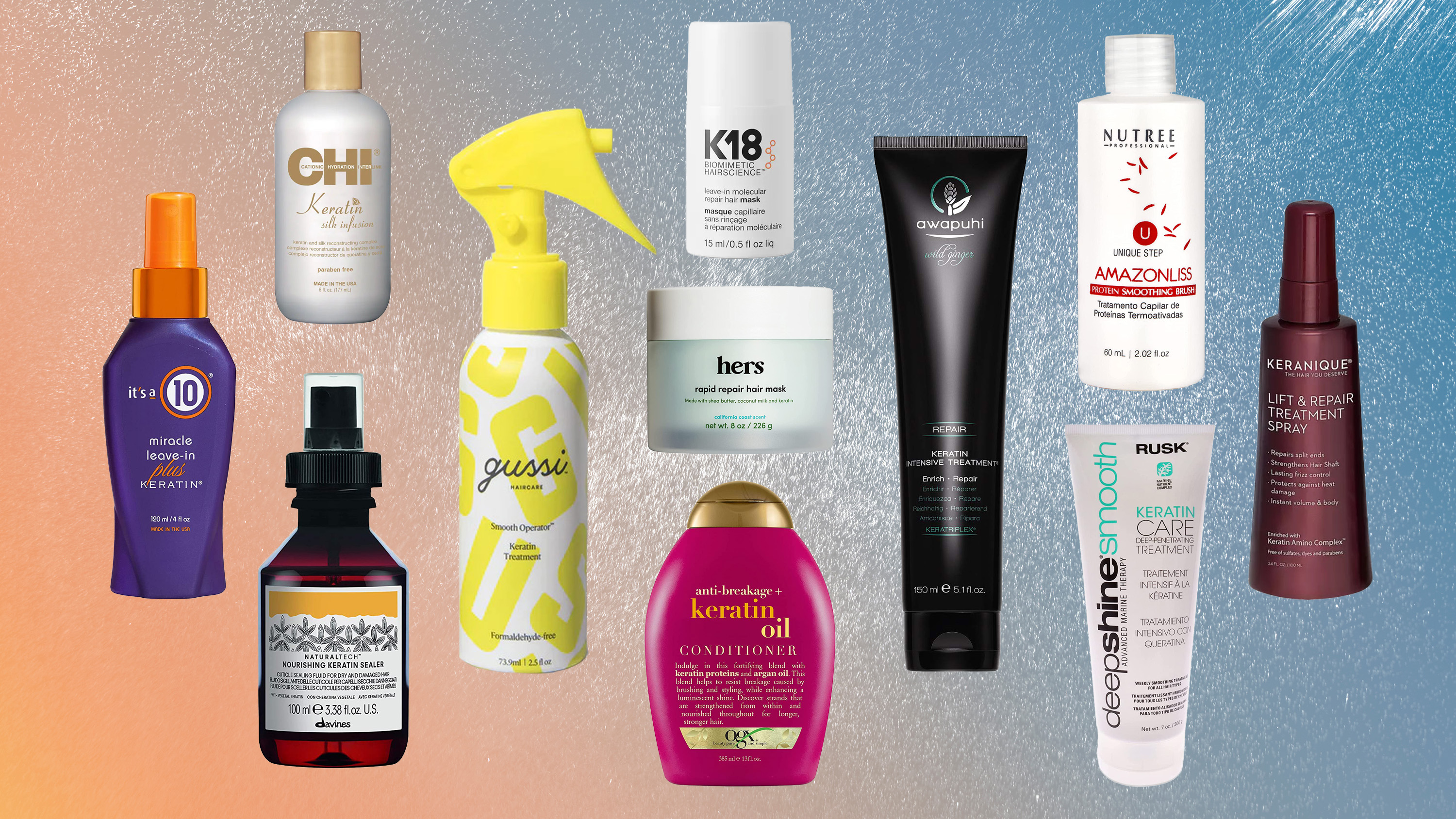

If your natural hair runs on the frizzy, can’t-be-tamed end of the spectrum and you'd prefer to skip styling it every day with even the best hair straightener, you might have explored keratin treatments to control your curls. First, there are in-salon options. While highly effective, they can cost up to $300 or more and take up a big chunk of time (around three hours, at least). Then, there are at-home keratin treatments. The best versions offer similar smoothing and straightening benefits at a fraction of the price and without many of the harsh chemicals. (Looking at you, formaldehyde).
But—and this is a big one—it’s important to research before starting a new haircare regimen. Marie Claire turned to Penny James, IAT, AOT, and board-certified trichologist and Alexandra Arriaga, hair chemist and medical researcher, to find the best at-home keratin treatments for every hair type and concern. As Arriaga says: “Not all at-home keratin treatments are created equal." It’s important to avoid certain chemicals and familiarize yourself with the pros and cons of each treatment variety.
At-home keratin treatments can be worthwhile, budget-friendly alternatives to a day at the salon. Ahead, the experts provide the best at-home keratin treatment options for your straightest, silkiest hair yet.
What to Look For in a Keratin Treatment
- Formaldehyde
Finding the best at-home keratin treatment is less about what you should see on the label and more about what you shouldn’t see. The big chemical to avoid is a carcinogen called formaldehyde, “a colorless, strong-smelling gas that presents a health hazard when breathed into the lungs, gets into the eyes, or touches the skin,” says Arriaga. According to the National Cancer Institute, when formaldehyde reaches a certain concentration in the air (0.1 ppm to be exact), you may experience watery eyes, burning sensations in the eyes, nose, and throat, coughing, wheezing, nausea, and skin irritation. Looking for labels like “No Formaldehyde” or “Formaldehyde Free” on your at-home keratin bottle is a good start, but you’re going to want to do some extra digging. “Many keratin treatments, both professional and at-home options, contain the liquid form of formaldehyde, which is called methylene glycol,” explains Arriaga. “To identify products containing formaldehyde-related ingredients, look for the following words on the label: Formaldehyde, formalin, and methylene glycol.”
- Keratin
There's a big difference between a true, at-home keratin treatment that can be likened to what you get in a salon and a keratin-infused product—marketing, however, makes sorting through products pretty confusing. The former uses a chemical straightening solution to break and re-seal the hair cuticle, creating a straighter, frizz-free shape. "Avoid any at-home keratin treatment if you have weakening hair," explains James, noting it can cause further dryness and breakage.
A keratin-infused product, on the other hand, is actually beneficial for hair health. "Keratin-infused products are hair care products that contain keratin, a protein naturally found in hair. These products help strengthen, condition, and repair damaged hair," explains James. "Keratin-infused products work by smoothing the hair cuticle, reducing frizz, and restoring elasticity, resulting in softer, shinier, and more manageable locks."
- Hair Type
"It's crucial to select at-home keratin treatment kits specifically formulated for your hair type and needs. By carefully reading reviews and instructions, choose a product that will deliver the desired results," shares James. Tightly curled or coily hair will likely require a more intense treatment to change the hair shape (just make sure you're going to a reputable provider and have selected a formaldehyde-free treatment), whereas wavy or loosely curled hair will find frizz-taming success with a keratin-infused product.
How We Chose The Best At-Home Keratin Treatments
The products on this list have either been vetted by Marie Claire's Beauty Editor Samantha Holender and Marie Claire's Beauty Director Deena Campbell or have been hand-selected by hair experts. Each and every one is also highly rated by reviewers. While the best keratin treatment for you will vary based on hair type and personal preference, you truly can't go wrong with one of the items on this list. For a more personalized recommendation, or if you have any concerns, check in with your hairstylist.
The Best At-Home Keratin Treatments
- Overall Best Keratin Treatment: Gussi Hair At-Home Keratin Treatment Kit
- Best At-Home Keratin Treatment for Curly Hair: GK Hair Smoothing Keratin Treatment
- Best Frizz-Fighting At-Home Keratin Treatment: Nutree Amazonliss Keratin Smoothing Treatment
- Best At-Home Keratin System: Moroccan Keratin Brazilian Keratin Hair Treatment
- Fastest Acting At-Home Keratin Treatment: Keratin Research Complex Brazilian Keratin Hair Blowout Treatment
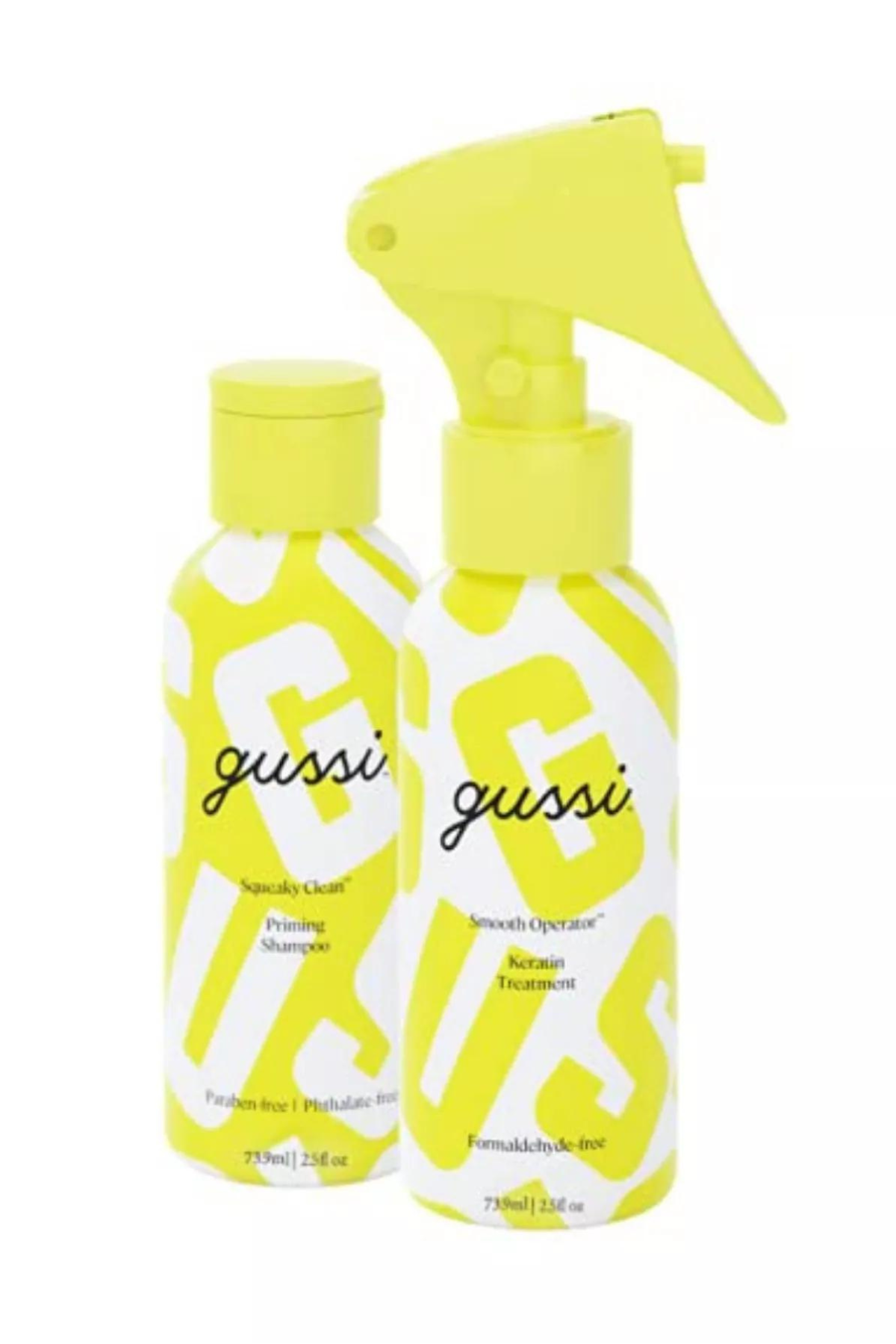
Alon Shalom, owner of Alon Shalom Salon in West Hollywood, California, is obsessed with Gussi's results. "One of my long-time clients recently came in for her balayage and I was blown away by the restored health of her hair—it was so much stronger and shinier than usual," he says. "I was totally shocked when she told me this was all from Gussi’s At-home Keratin Treatment! After checking out Gussi, I’m even more impressed that this is a clean, non-toxic formula delivering these impressive results." The kit promises results lasting a grand total of six weeks and works across all hair types. That said, it's not going to remove curls—it'll just elongate the curl pattern.
Pros: Long lasting; Mimics salon results; Fast acting
Cons: Only lasts six weeks; Won't permanently straighten
Hair Type: All hair types
Key Ingredients: Formaldehyde-free
Type: Priming Shampoo and Keratin Treatment Spray
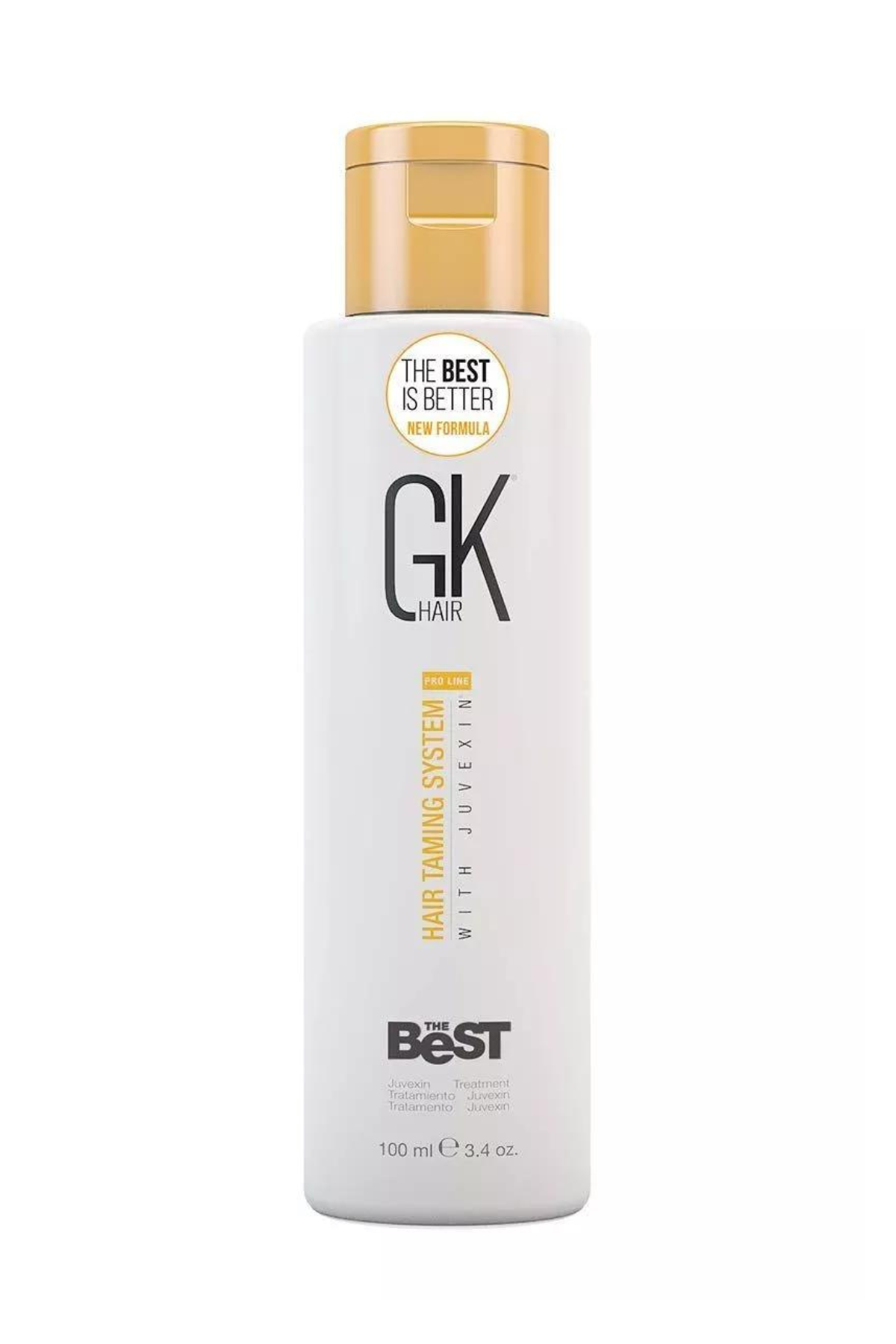
Clear your schedule, then get ready for one of the most effective at-home treatments available. Start with clean hair, then use the included application brush to (rather painstakingly) smooth the cream from root to tip on 1/2" sections of hair. Wait up to an hour, depending on your hair texture. Then blow dry and flat-iron. "I love that the proprietary juvexin, a keratin-based protein blend, will keep your hair smooth for three to five months," says Campbell. You can shop one bottle on its own or shop multiples on Amazon.
Pros: Lasts three to five months; Mimics salon results; Cruelty free
Cons: Takes one hour to activate; Requires precise application
Hair Type: Curly
Key Ingredients: Keratin, Coconut
Type: Shampoo and gel
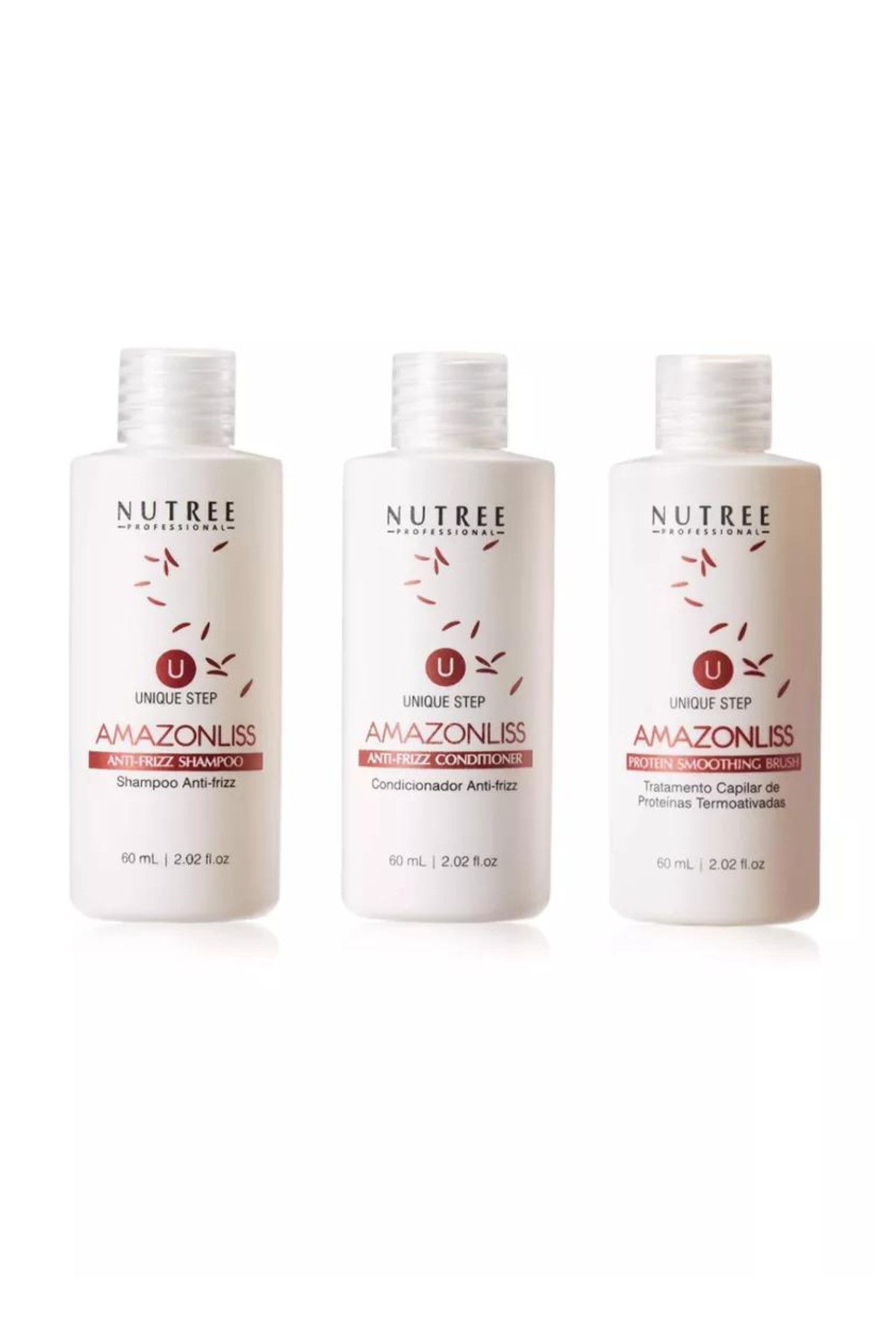
If you're determined to hold on to frizz-free hair for up to four months, try this three-step system. The treatment is comprised of strengthening ingredients like acai, cocoa extracts, and shea butter for added hydration and shine. Consumers have given this system great reviews. The consensus? It reduces frizz, leaves hair shinier and more manageable, and provides pretty true-to-description results. On the downside, many people have found that it doesn't truly straighten hair, can have a subtle odor once heat activated, and has a multi-step application process that requires careful attention to detail.
Pros: No fumes; Last four months; Combats Frizz
Cons: Time consuming to apply; Slight odor; Confusing instructions
Hair Type: All hair types
Key Ingredients: Formaldehyde-free, Rice Protein
Type: Gel, shampoo, and conditioner
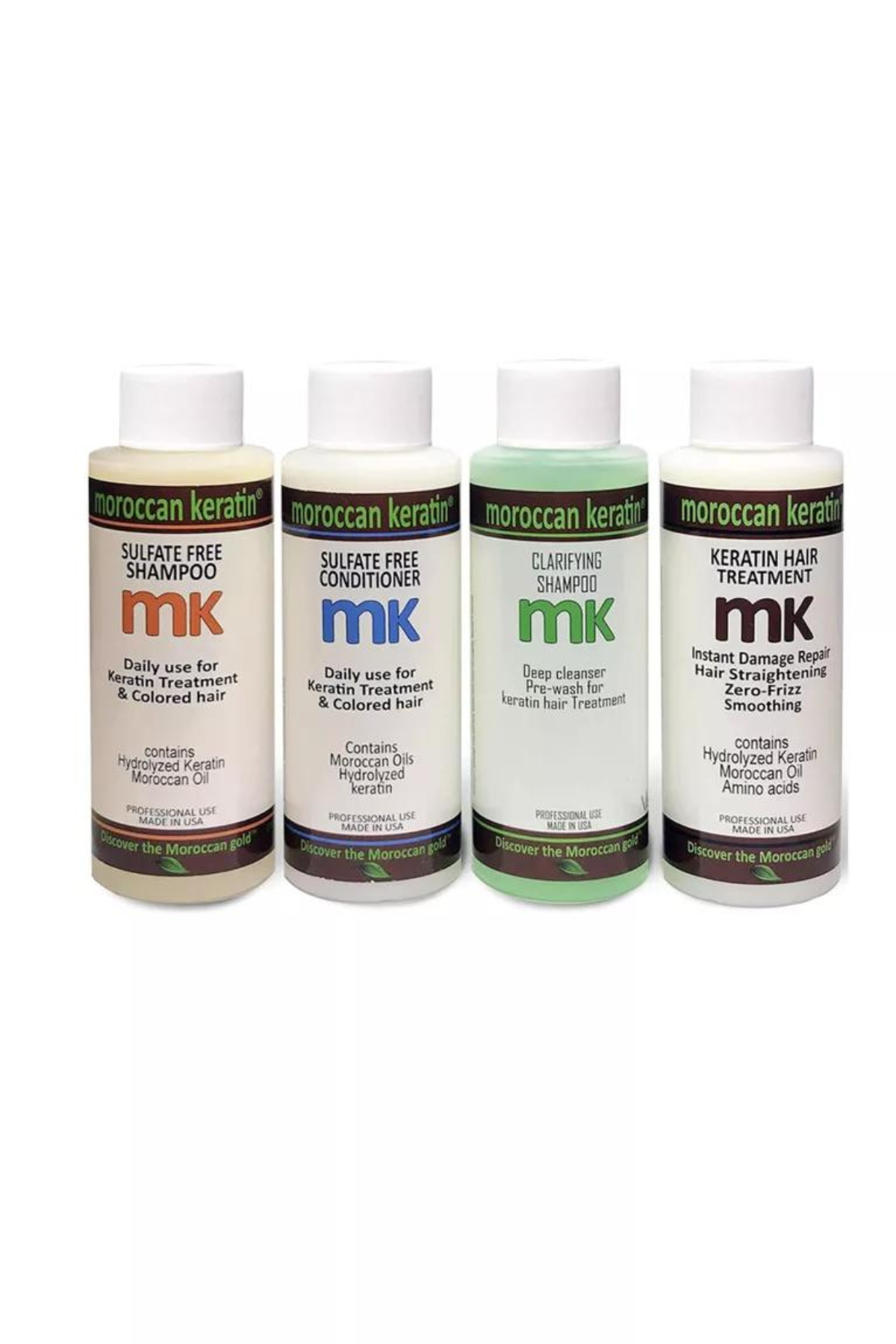
The name on the bottle says it all: Keratin and silk work together to strengthen damaged hair cuticles from the inside out, resulting in long-lasting and glossy strands. "The main allure of this product is that not only are you going to see a noticeable difference after just one use, but the technology works to prevent any additional breakage," says Campbell. Once your hair is straightened, it's impossible to deny that it added some silky shine.
Pros: Long lasting; Hydrating
Cons: Time-consuming to apply; Strong Fumes
Hair Type: All hair types
Key Ingredients: Argan oil
Type: Shampoo, conditioner, gel
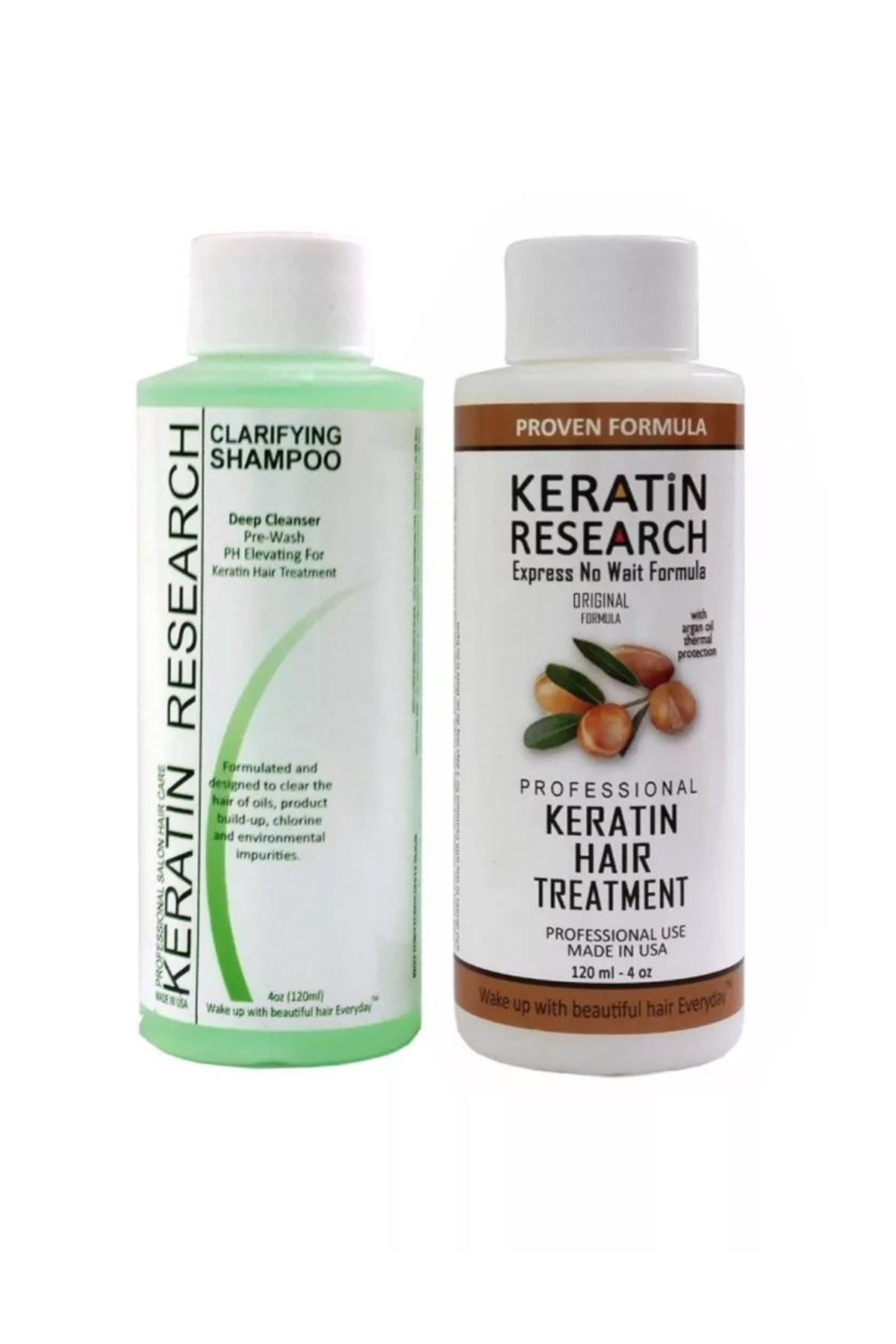
Think of this duo as an express two-step keratin treatment. First you'll shampoo with the sulfate-free formula, then you'll get to work painting your hair with the hydrolyzed keratin straightening formula. The set promises a straight and shiny texture for up to six months—minus the money and wait time. Campbell says, "While the benefits are numerous, we do want to call out that this is a chemical solution that might fume and make your eyes water when you activate the treatment with heat."
Pros: Lasts four to six months; Affordable; Can shower directly after
Cons: Only works on 1A to 3A hair types; Fumes when straightening
Hair Type: Course, curly, or damaged
Ingredients: Argan oil, Amino acids
Type: Shampoo and gel treatment
The Best Keratin-Infused Hair Products
- Best Drugstore At-Home Keratin Treatment: Novex Brazilian Keratin Deep Conditioning Mask
- Most Reparative At-Home Keratin Treatment: K18 4 Minute Leave-In Molecular Repair Hair Mask
- Best Everyday At-Home Keratin Treatment: OGX Anti-Breakage + Keratin Oil Fortifying Anti-Frizz Conditioner
- Most Nourishing At-Home Keratin Treatment: Davines Nourishing Keratin Sealer
- Best Hydrating At-Home Keratin Treatment: L'anza Keratin Healing Oil Intensive Hair Masque
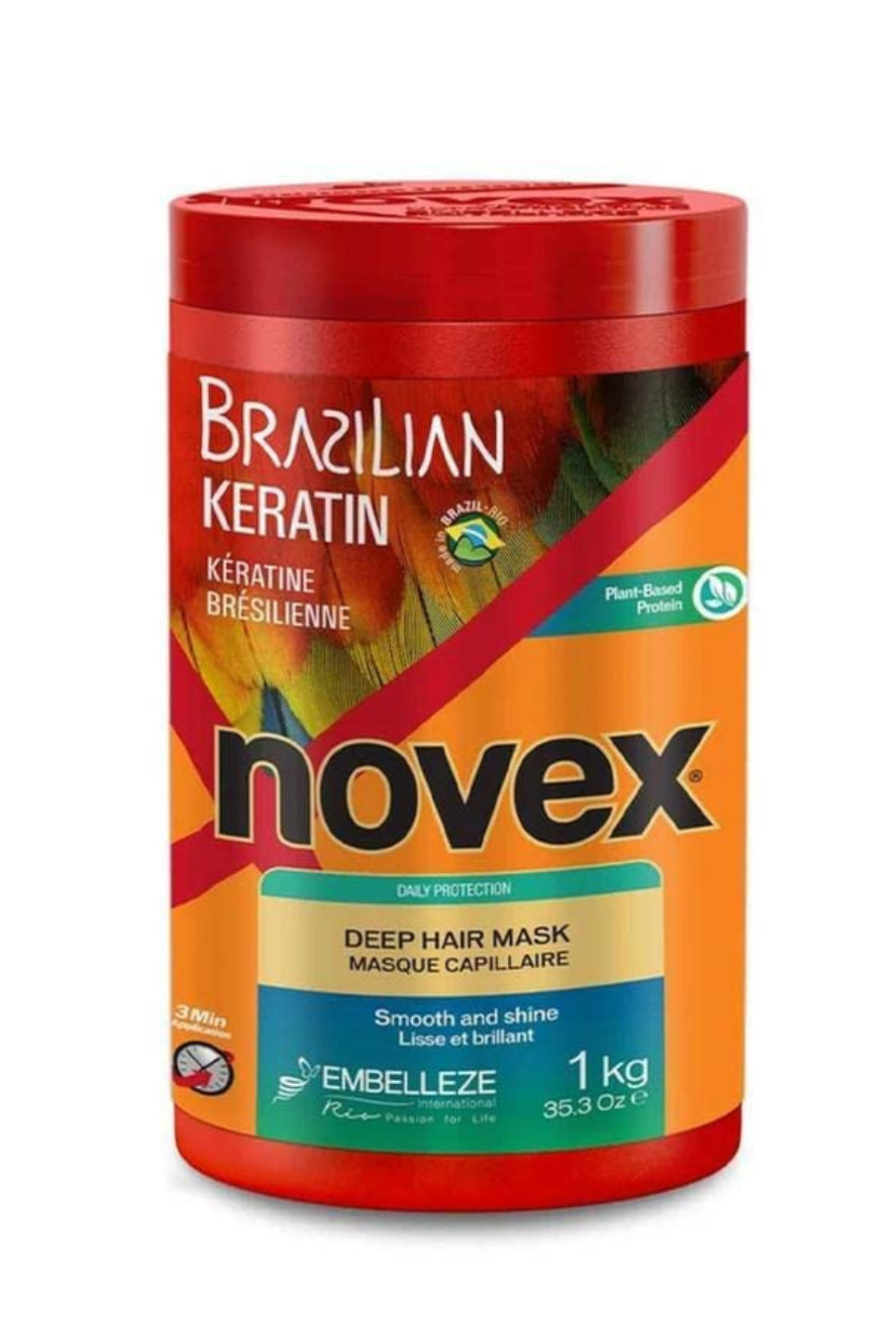
This at-home treatment is an Amazon gem, boating more than 1,200 five-star ratings thanks to its quick, extremely effective formula. They key to its success is that it uses liquid keratin to do damage control on weak hair follicles, so hair ends up stronger, straighter, and shinier after just one use. It also reduces volume and straightens existent curl patterns, making it far more suitable for people with tighter curl patterns as opposed to loose waves.
Pros: Amazon; Powerful results
Cons: Can leave hair weighed down
Hair Type: Straight
Key Ingredients: Non-animal keratin
Type: Cream
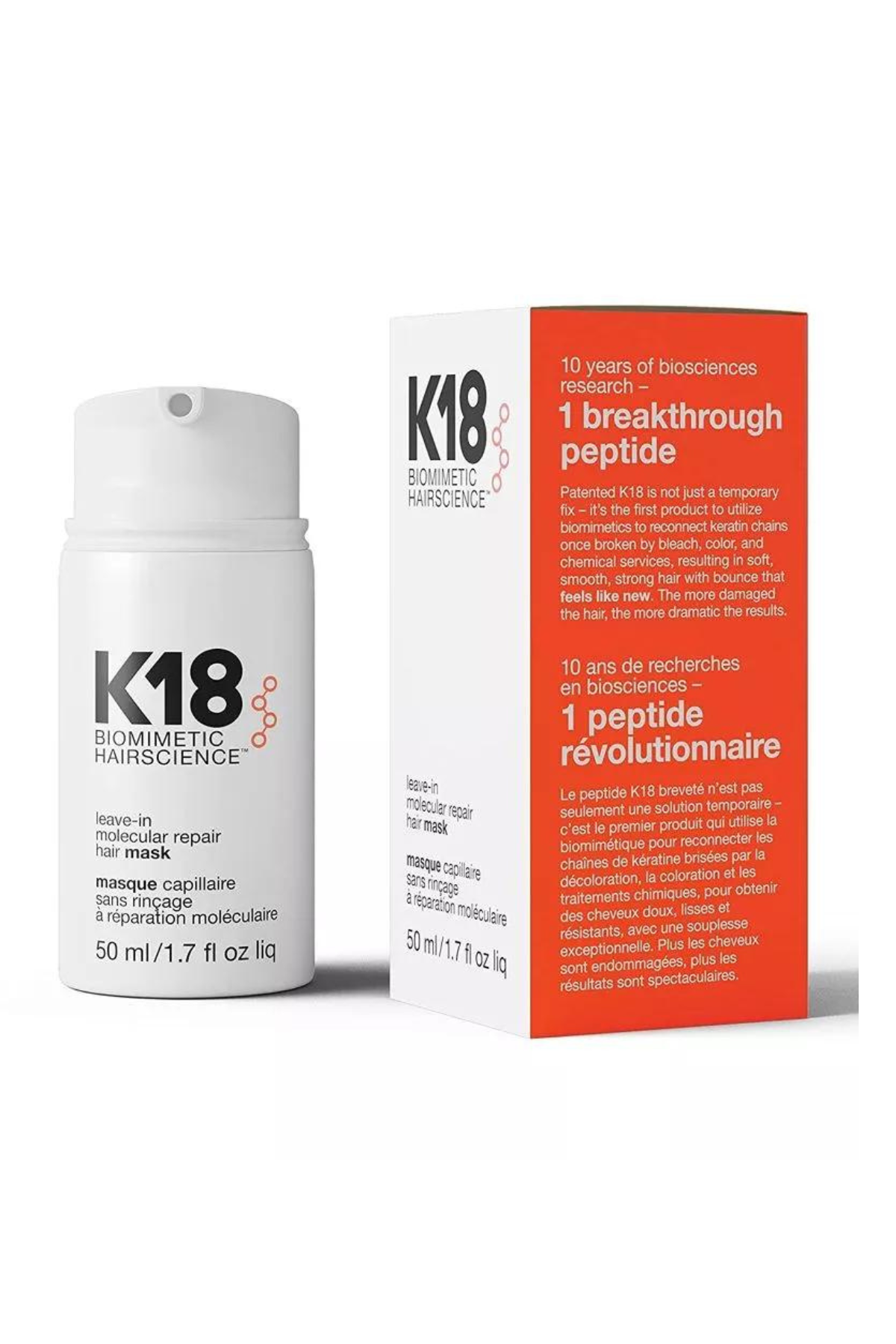
The second beauty editors ask Instagram about leave-in keratin treatments, K18's is one of the most popular responses—and it's not hard to see why. Creating hair "that feels like new" is one of its key claims. It has a vegan, color-safe formula that quite literally seals up damaged hair cuticles over a few treatments. While this will boost shine and does have frizz-fighting properties commonly associated with professional keratin treatments, it doesn't create naturally straight hair. Those with curly hair will still have curly hair after this treatment—it'll just feel smoother, softer, and healthier.
Pros: Repairs damage; Restores Shine; Leave-In Treatment
Cons: Might weigh down fine hair; Won't change hair texture
Hair Type: All hair types
Key Ingredient: Peptides
Type: Cream mask
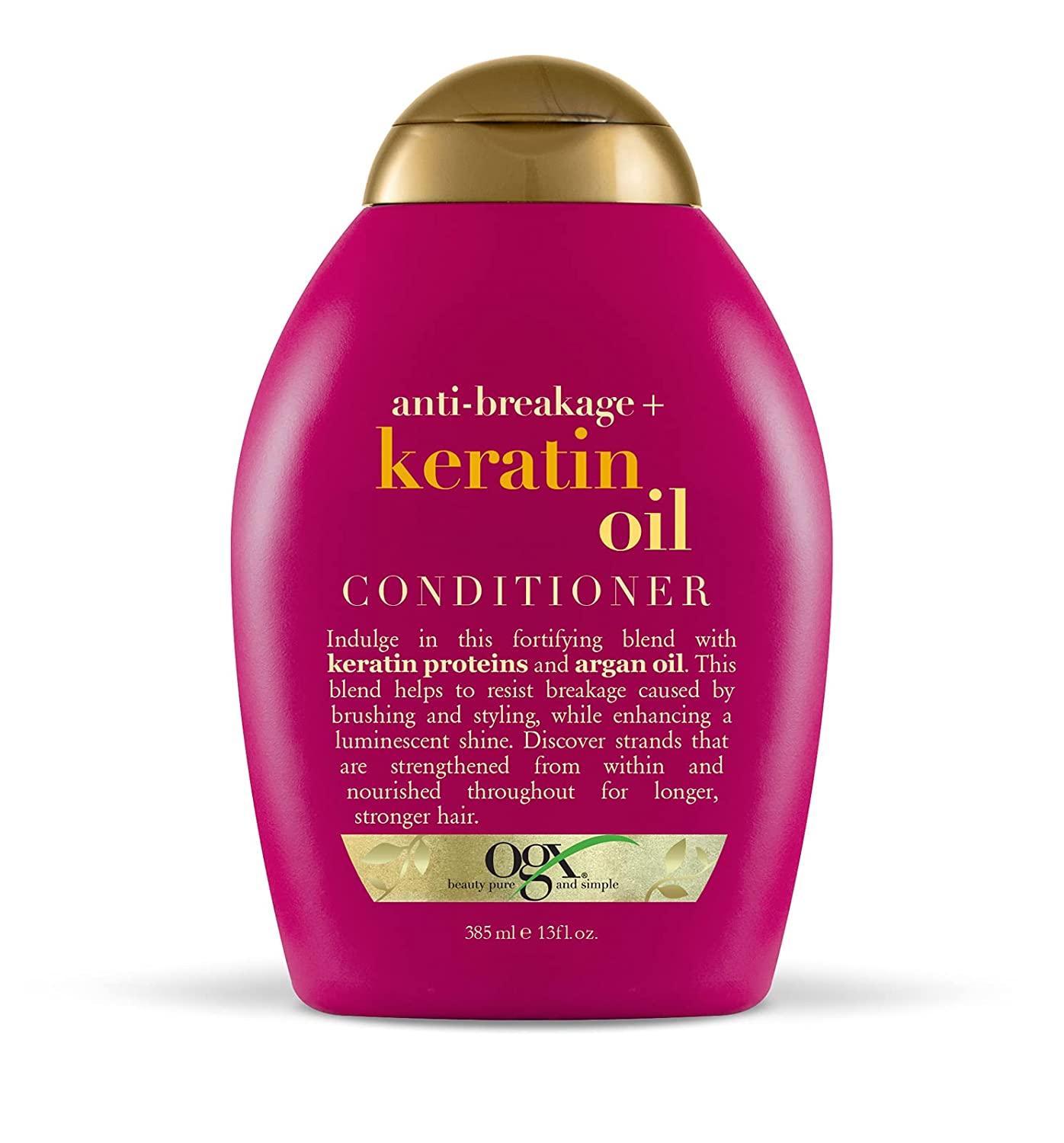
Welcome this conditioner into your beauty regimen, and you can wave goodbye to frizz, split ends, and fragile hair that breaks at the slightest swipe of a brush. Keratin and argan oil come together in this formula to repair and strengthen your hair. "The best part about this product is that it adds absolutely nothing extra into your routine," says Campbell. "You can use every day, without weighing down your hair, and will see more impactful results over time." Plus, the smell is divine.
Pros: Good for daily use, Repairs split ends
Cons: Not great for color-treated hair
Hair Type: Dry and damaged
Key Ingredients: Keratin and argan oil
Type: Liquid conditioner
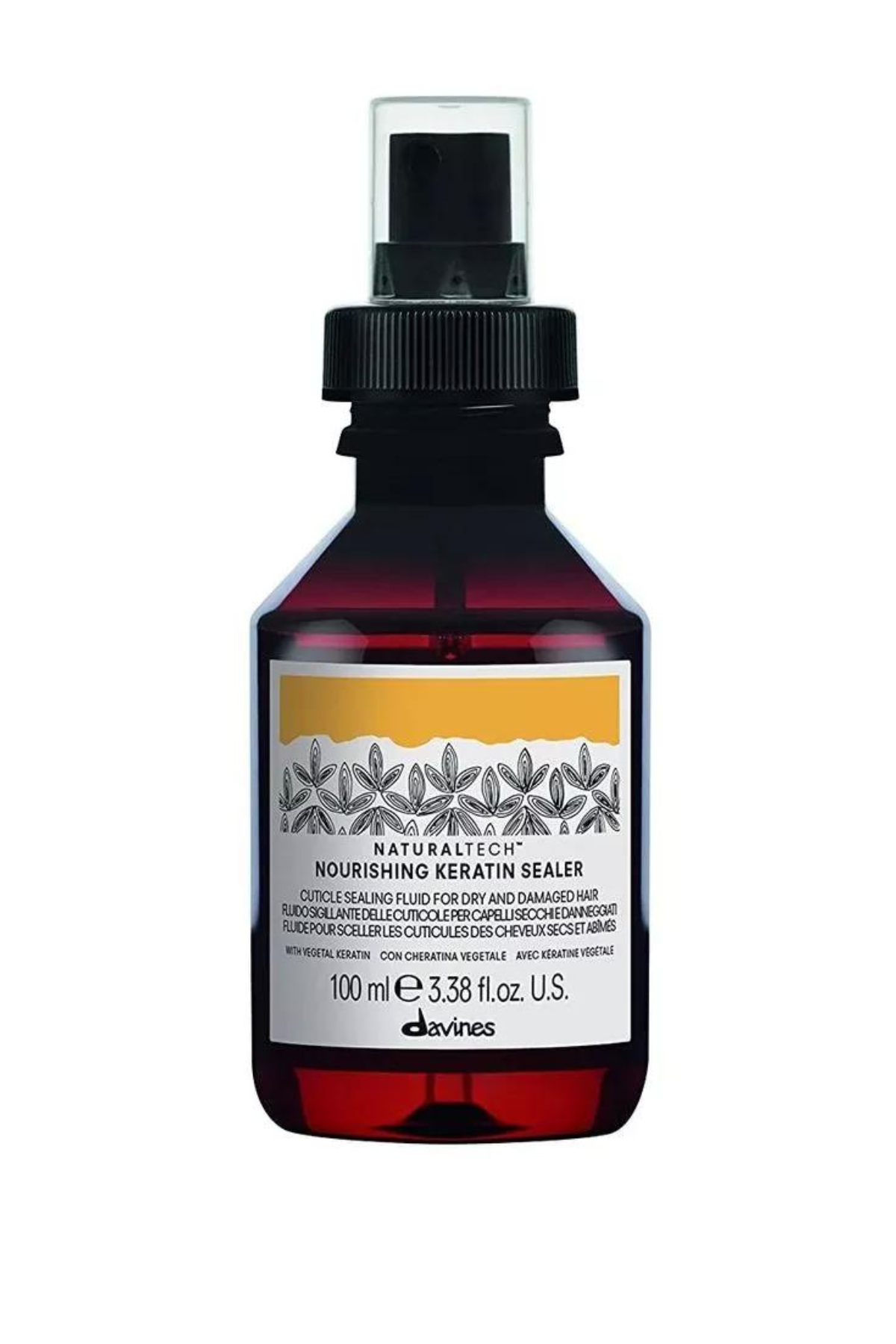
This top-rated oil works to repair the hair cuticle from the inside out. When the cuticle is sealed up tight, water doesn't sneak in and frizz is avoided. Sounds pretty good, huh? It gets better. "A few sprays on damp hair makes combing a breeze, reduces the appearance of split ends, and gives an unmatched shine once the hair is blow dried or styled," says Campbell. "As is true with all Davines products, the smell can't be beat. This treatment features a natural, earthy scent."
Pros: Boosts shine; Repairs hair over time
Cons: Doesn't make hair straighter; Doesn't include heat protection
Hair Type: Damaged
Key Ingredients: Keratin
Type: Serum-oil
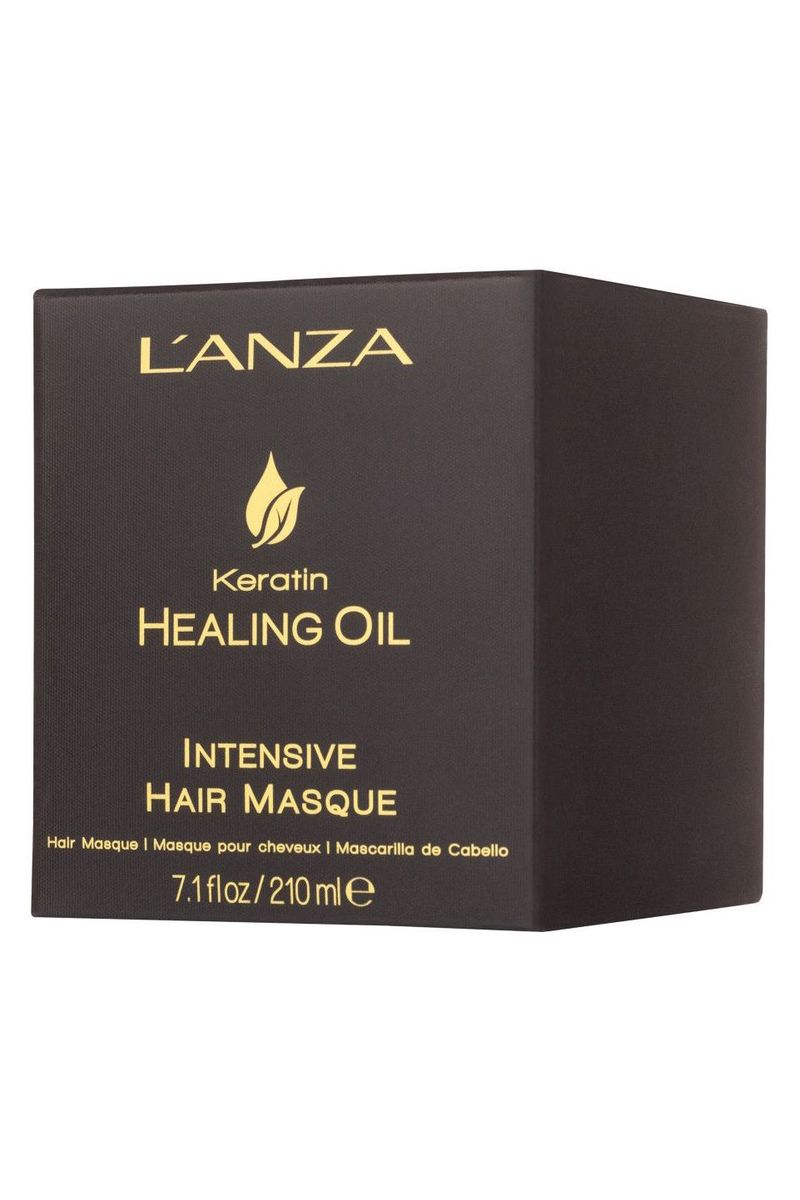
Sometimes, hair needs a solid reboot due to climate change and heavy-duty styling, which is where this healing hair mask comes in. The keratin works as a building block for the hair bond and the antioxidant, resveratrol, has restorative powers that brings dry and brittle strands back to life. "Even though it's deeply hydrating and has an oil base, this products isn't too heavy," says Campbell. "In fact, it even adds a little bounce and body to hair."
Pros: Volumizing; Strengthening; Editor-approved
Cons: Very fragrant; Can be drying
Hair Type: Dry and course
Key Ingredients: Keratin protein
Type: Cream
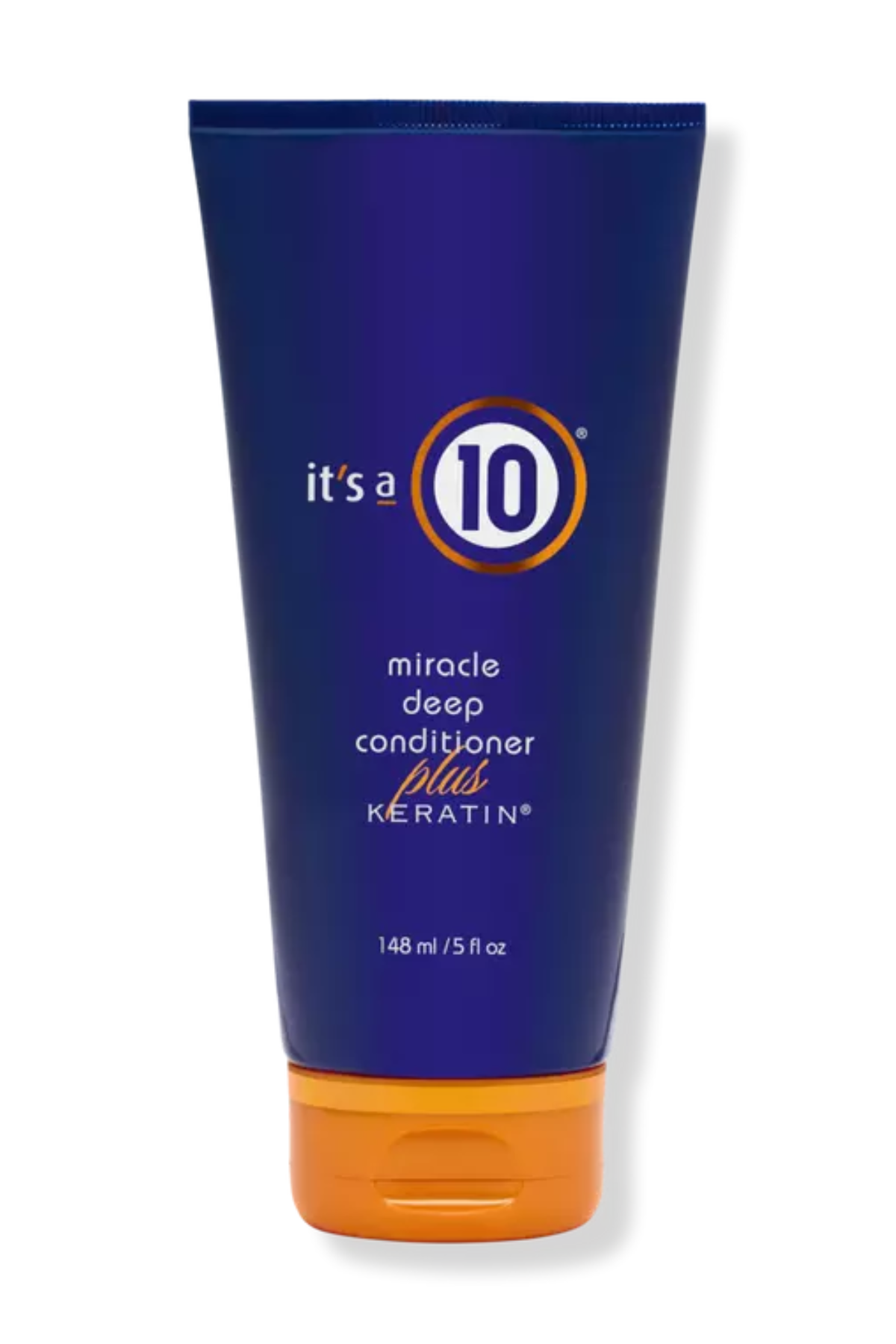
If the mere thought of detangling gives you anxiety, relieve yourself by reaching for this miracle worker of a styling spray, which is infused by hydrolyzed keratin. The brand is best known for its strengthening products to make your hair feel more manageable. Afterwards, you'll be able to easily glide your wide tooth comb through your hair without the stress of that strenuous arm workout. "It's the only product you'll need in your routine," says Campbell. "In addition to its strengthening and smoothing powers, it also offers heat protection from your hot tools."
Pros: Detangles; Protects from heat damage
Cons: Fragrant
Hair Type: All hair types
Key Ingredients: Hydrolized keratin
Type: Cream
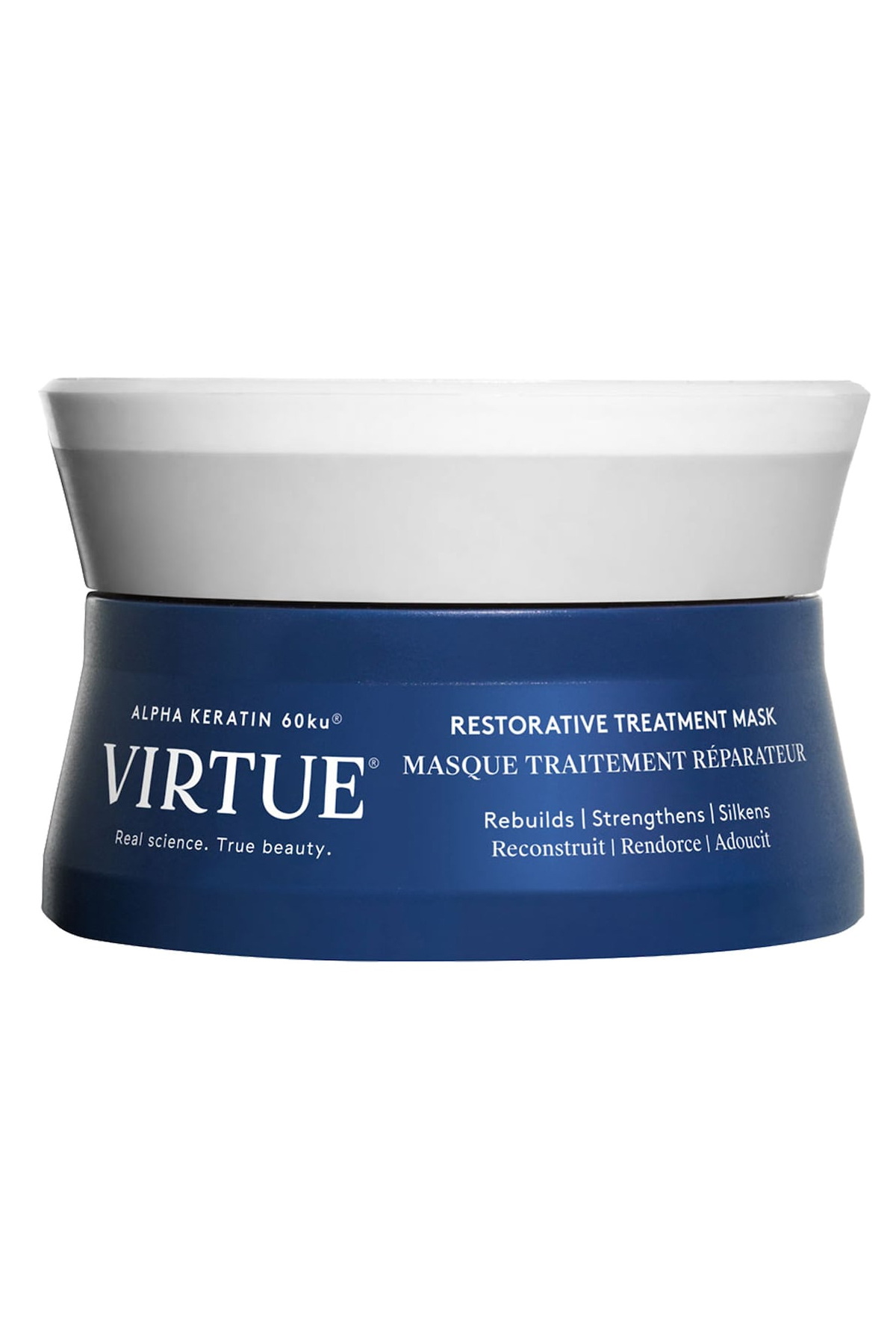
Even if your hair has never touched dye or chemical treatments, it could use some TLC from time to time, and this hair mask will provide just that. Every product in this line has Alpha Keratin 60ku, a protein that's identical to the keratin that makes up 90 percent of hair. So while this mask is working to provide intense hydration, it's also filling and smoothing the cracks of damage. What results is softer, less-damaged hair that's easier to manage—all it takes is just three minutes with this mask.
Pros: Clinically tested; Vegan; Color safe; Repairs damage; Sulfate- and paraben-free
Cons: Expensive
Hair Type: All hair types
Key Ingredients: Keratin, Baobab Seed Oil, Brown Algae Extract, Amaranthus Caudatus Seed Extract
Type: Mask
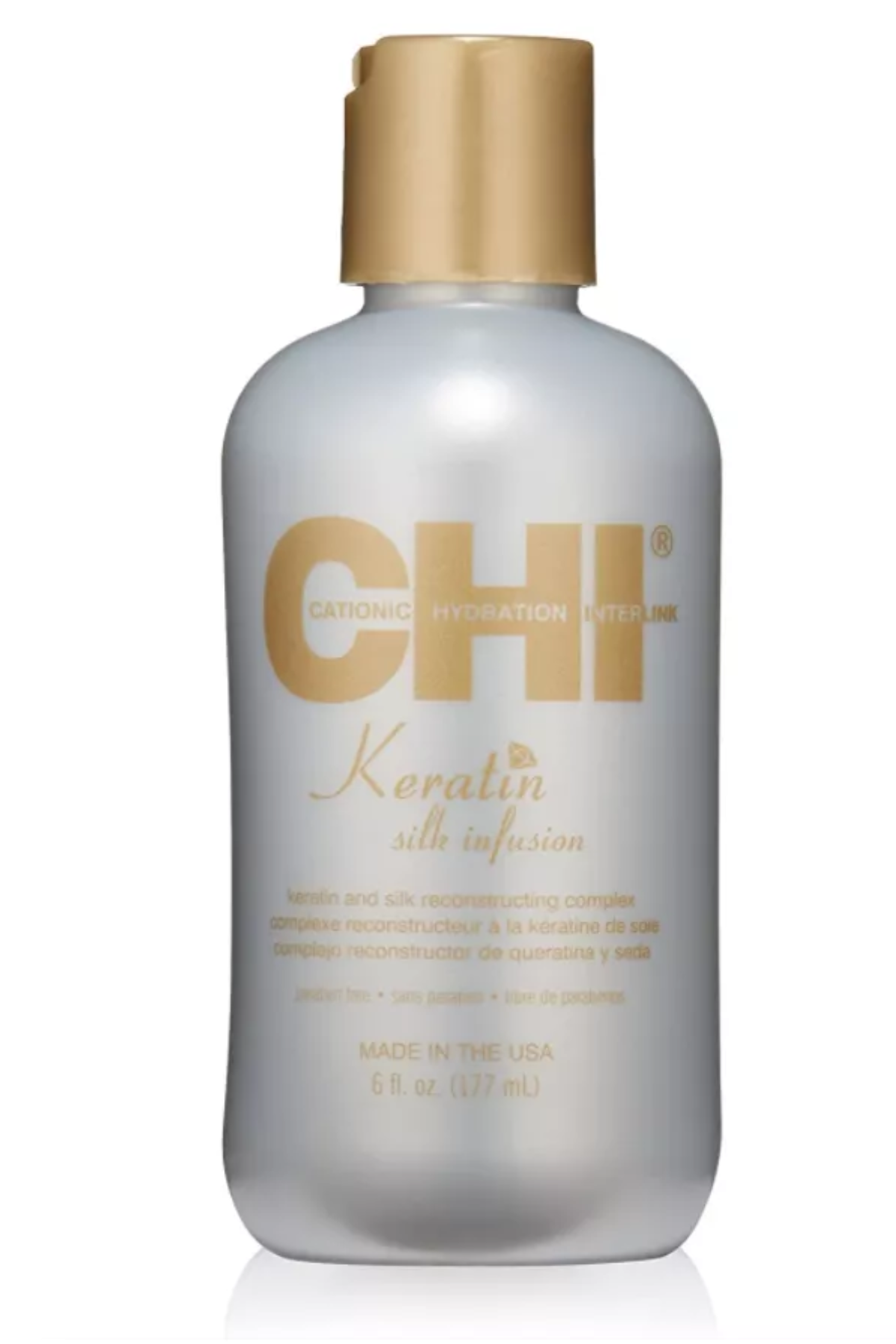
The name of this popular treatment says it all: Keratin and silk work together to strengthen damaged hair and reinforce cuticles from the inside out, resulting in long-lasting, glossy hair. "The main allure of this product is that not only are you going to see a noticeable difference after just one use, but the technology works to prevent any additional breakage," says Campbell. Once hair is straightened, it's impossible to deny that didn't add some silky shine.
Pros: Unscented; Adds strength and silkiness
Cons: Can weigh down fine hair
Hair Type: All hair types
Key Ingredients: Keratin silk
Type: Oil
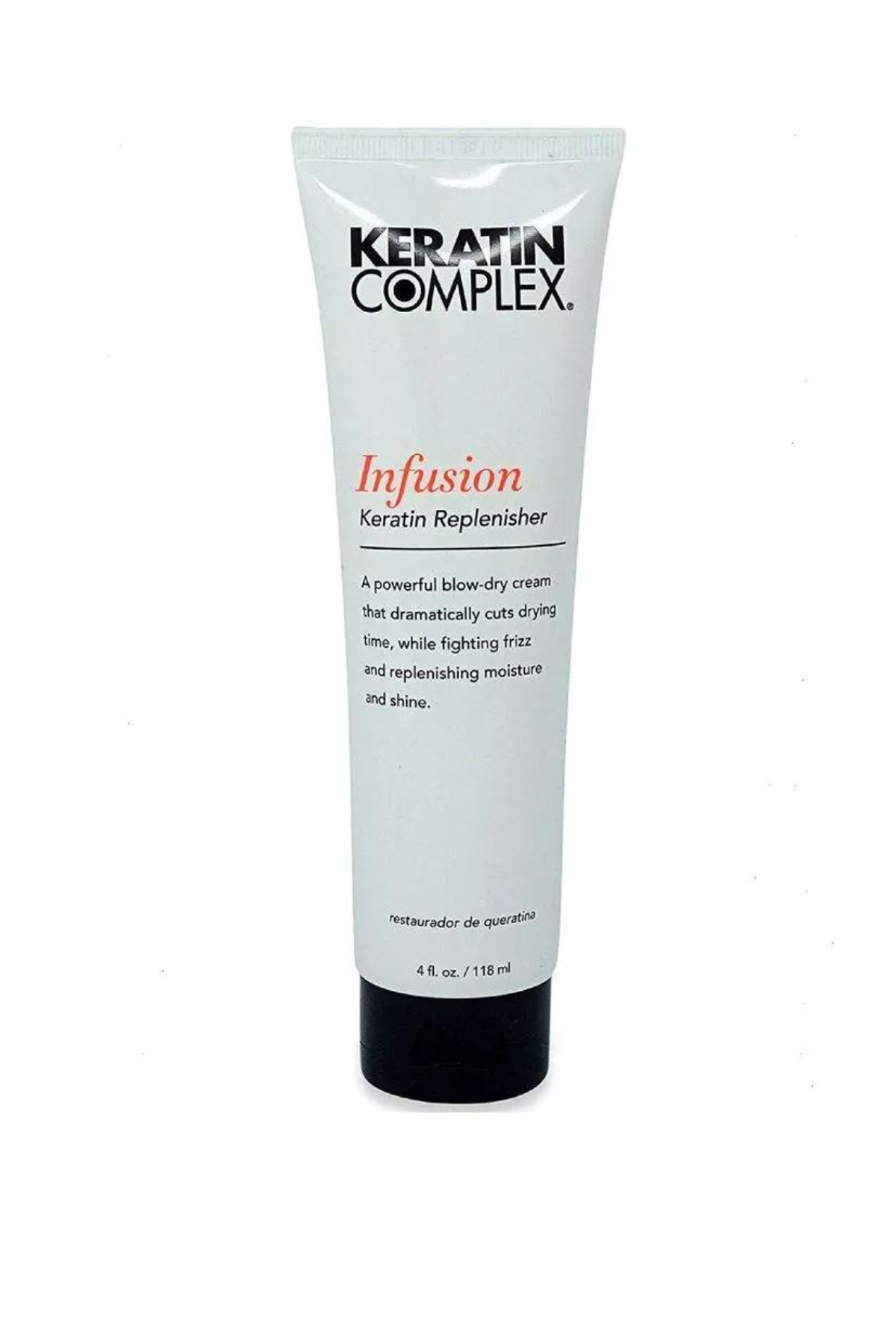
Hydrolyzed keratin is the second ingredient in this effective leave-in cream that also contains strengthening proteins (soy, wheat). It really will minimize the amount of time you spend wielding a hair dryer—and extend the number of days before you need to do it again. Unlike more intense, heat-activated treatments, this simple blow dry cream can be used on repeat and will take all of two seconds out of your day. It's not going to break down your hair's bonds for jaw-on-the-floor straightening results, but it will give you smoother, shinier hair every damn time.
Pros: Boosts hydration; Fights Frizz; Lightweight
Cons: Short-term results; Minimal difference on curly and coily hair
Hair Type: All hair types
Key Ingredients: Proprietary Keratin Complex
Type: Leave-in cream
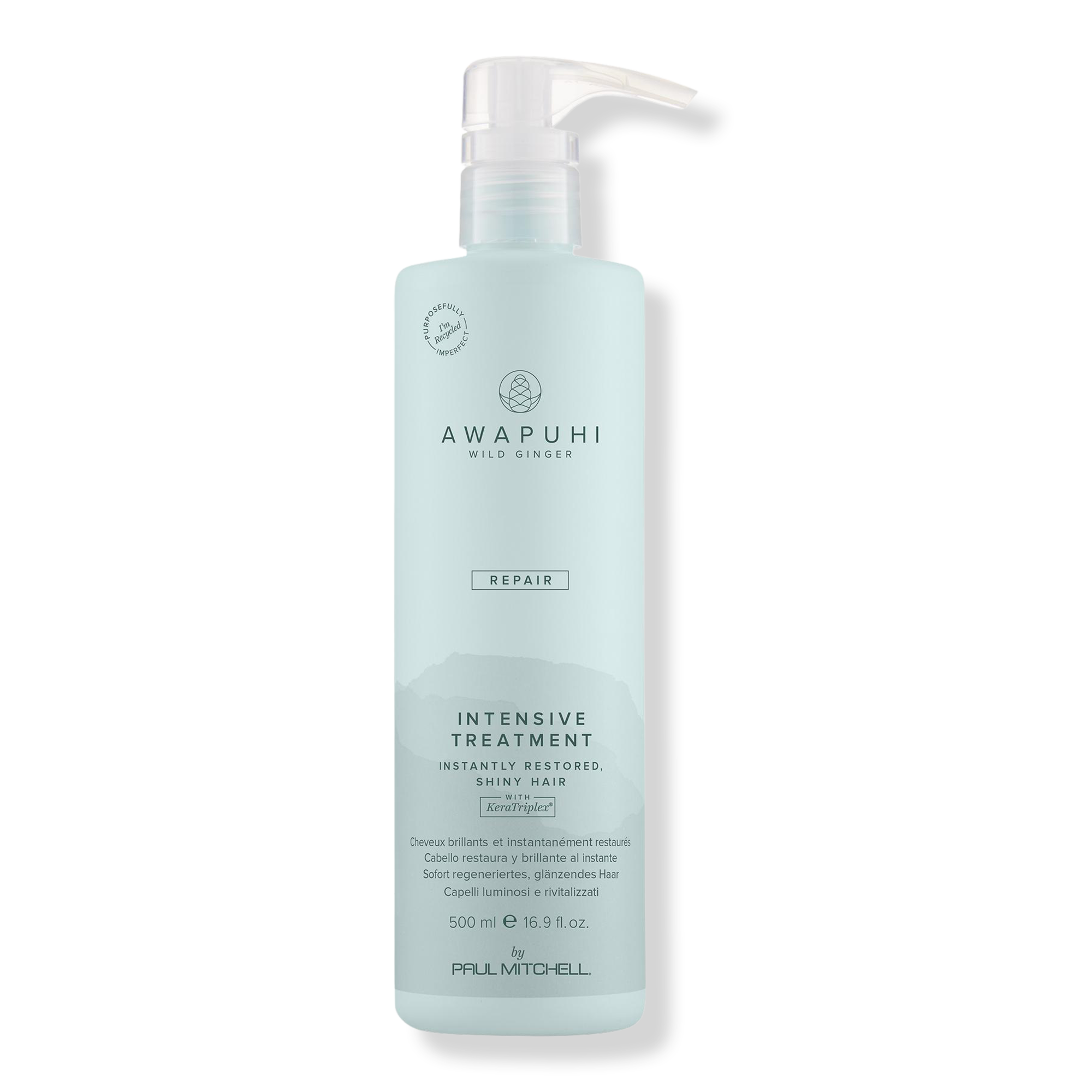
This intensive treatment from Paul Mitchell’s Awapuhi brand is formulated with KeraTriplex and Awapuhi extract to restore damage, leaving you with your softest, shiniest, and most moisturized hair yet. The invigorating scent of ginger tea and florals in this formula is borderline addictive. While it works wonders on the shine front, you'll probably want to find an everyday treatment to help control frizz, and be advised that this mask is only designed to be used once per week.
Pros: Hydrating; Restores shine; Color safe
Cons: Not the best option for frizzy hair
Hair Type: All
Key Ingredients: Keratin protein and Awapuhi extract
Type: Cream
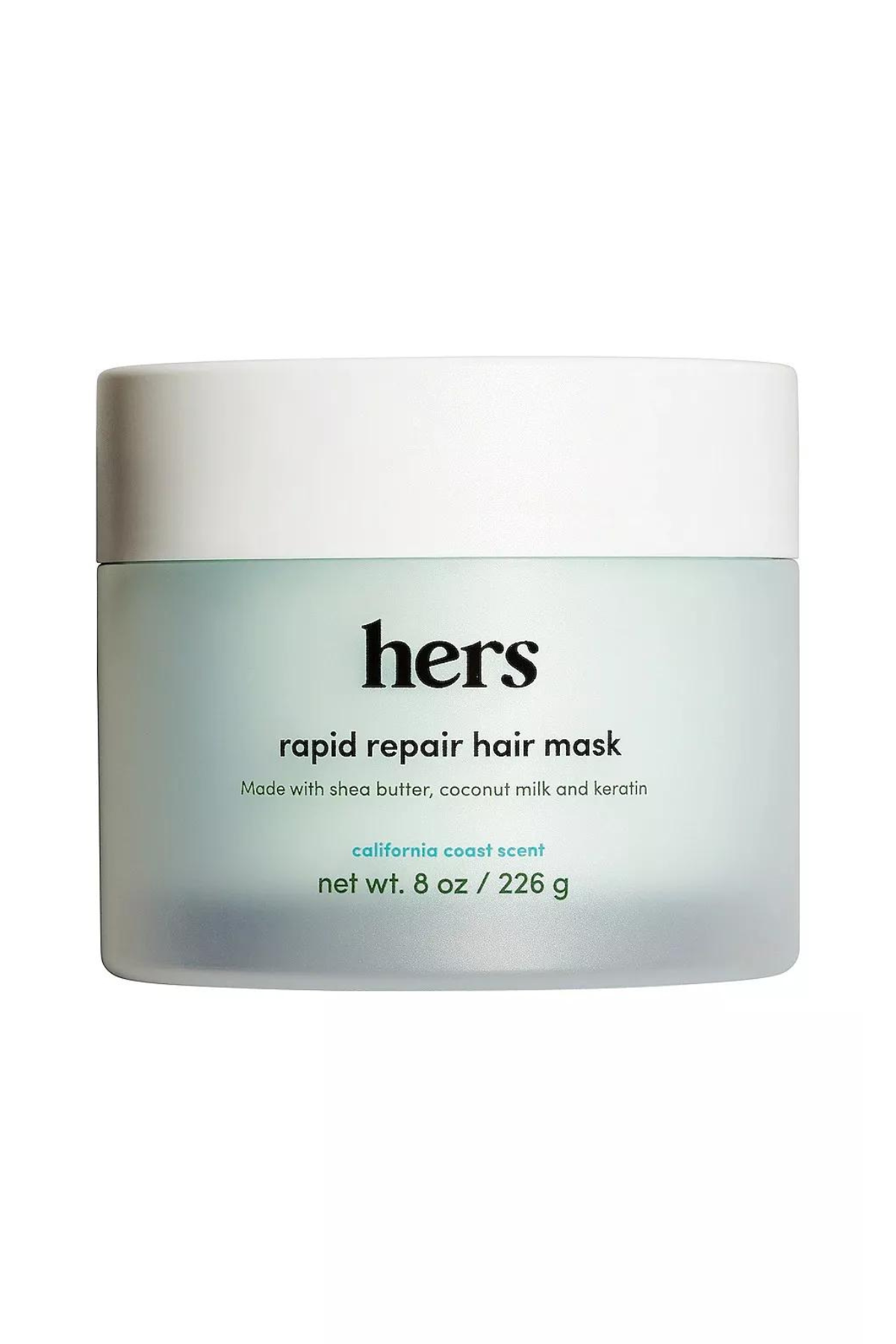
Give your hair a boost with this deep conditioning hair mask. The keratin will go to work smoothing your hair while ingredients like coconut oil, shea butter, and jojoba seed oil will condition, so you’ll be left frizz-free and shiny. That said, it should be used in tandem with other hydrating haircare products, as this is a once-weekly treatment. "To apply, just shampoo, rinse, and let the mask do its job for up to 10 minutes," says Campbell.
Pros: Vegan; Easy to apply
Cons: Not hydrating enough for some
Hair Type: All hair types
Key Ingredients: Keratin, coconut oil, shea butter
Type: Cream mask
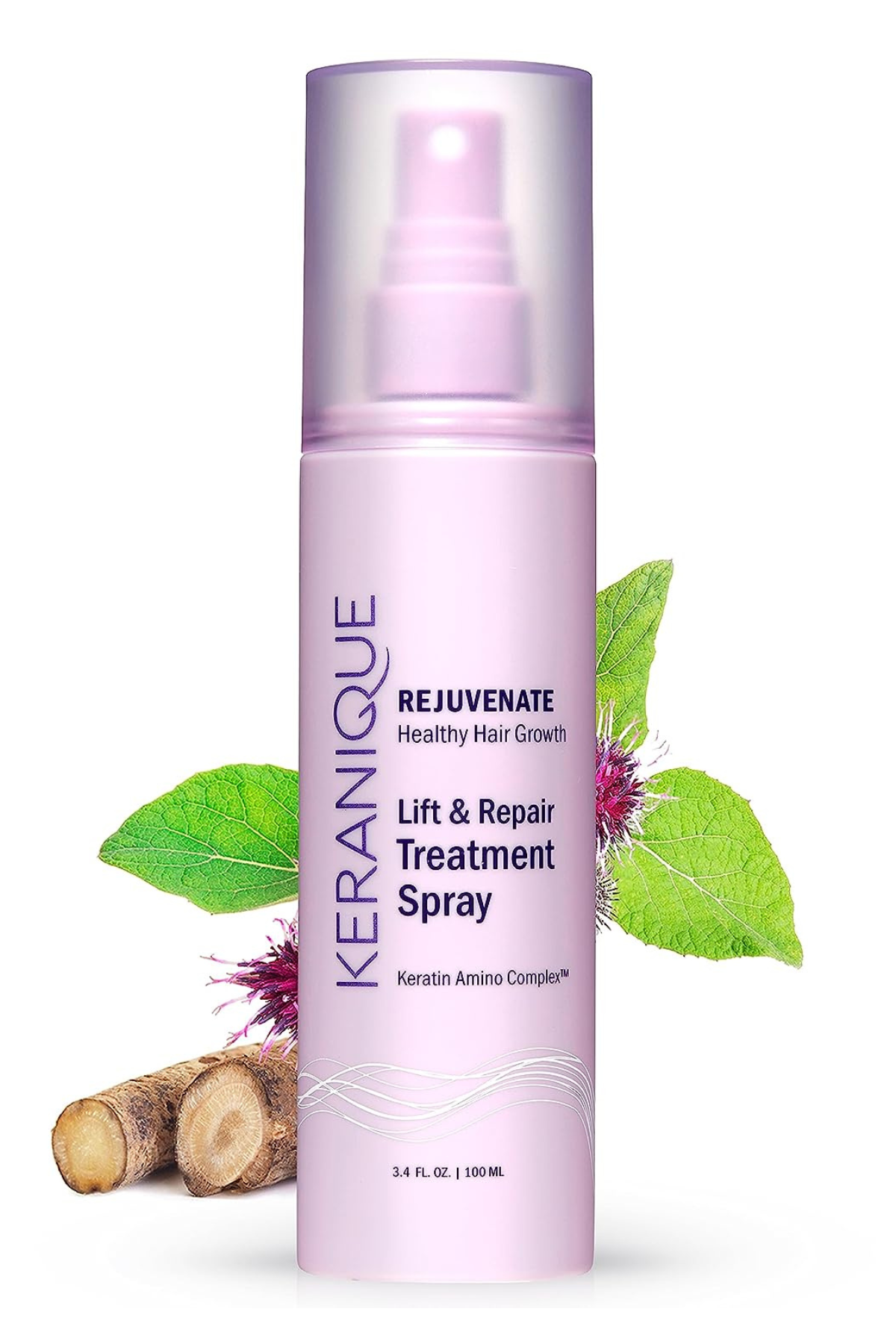
This spray's keratin amino complex nourishes, strengthens, and protects your hair while adding volume. "It’ll give your hair a lift and make it thicker and fuller—even if you're dealing with a thin, fine texture," says Campbell. Reviewers are obsessed with this product's ability to fight frizz and applaud it for its lightweight texture, however some note it has a sticky texture and can dry out the hair.
Pros: Frizz-fighting; Volumizing
Cons: Sticky; Drying
Hair Type: Fine and thin
Key Ingredient: Proprietary Keratin Amino
Type: Spray
What’s the Difference Between an At-Home Keratin Treatment and a Salon Keratin Treatment?
At base level, keratin is a protein found in the hair. The more keratin you have, the smoother, glossier, and shinier your hair will be—it fills the frizz-causing holes in the hair cuticle. That said, not every keratin treatment is created equal. In a salon, you can expect more dramatic, longer-lasting results. An in-salon keratin treatment can take curly, coily hair to a straighter state that lasts for weeks or more. At-home treatments, which can take the form of conditioners, shampoos, masks, or, occasionally, salon-mimicking systems, can work wonders for frizz, but won’t necessarily last through dozens of shampoos or change your natural texture. The results will also differ across hair types.
How Do Keratin Treatments Work?
When you go to a salon or purchase a profession-grade at-home keratin treatment kit, the hair is typically straightened with a solution containing glyoxylic acid or formaldehyde, explains Arriaga. “When some of these solutions are applied on the hair, the bonds inside each strand are broken and resealed in a straighter position.” Trichologist Dr. James adds that a minimum temperature of 450 degrees is needed to seal the deal (pun very much intended) and “glue” the cuticle back together.
Meanwhile, keratin-infused solutions and products “work by coating each individual strand to smooth down the hair cuticles and give a glossy, frizz-free finish," says Dr. James. "This coating wears off over time, however."
How to Do a Keratin Treatment At-Home
As tempting as it may be, don’t go straight into treatment mode. Preparation is just as important. “The pre-treatment will be shampooing your hair with a sulfate-free shampoo,” says Dr. James. Arriaga also recommends getting your hair colored ahead of your treatment. “Keratin will help preserve the color,” she adds. Just give yourself a few days or weeks of buffer time.
After you finish your at-home treatment, there are a few key things to avoid, like getting your hair wet or direct sun exposure. “Even keratin treatments that claim you can wash your hair immediately benefit from waiting at least 24 hours," says Alexandra Efstratiou, a New York-based stylist. “It just gives the hair and product time to settle in together.”
How to Make at At-Home Keratin Treatment Last
Simple keratin treatment products that aren't heat-activated provide results that last until your next shampoo. Sometimes, your hair will even become naturally silkier and smoother with continued use.
Using a more intense at-home treatment that's designed to last for months, such as the Gussi option? Consider reducing the wash days in your routine. “The longevity of a keratin is primarily based on your frequency of washing, so the less often you can do the better,” Efstratiou says.
Better yet, stylists also recommend using hair styling products infused with keratin (so basically all of the above) to keep your treatment looking fresh. “I like to recommend using keratin-infused products on days you do wash and style your hair,” says Shalom. “Extra doses of keratin help to refresh the treatment results.”
How Often Can I Do an At-Home Keratin Treatment?
If you're using keratin-infused styling products that don't require heat activation, you're free to use your product of choice every single wash or at least once per week. That said, more intense treatments requiring heat activation should be applied sparingly. They're designed to last at least a couple of months, but the exact duration will vary from treatment to treatment. Make sure to double check the instructions on your bottle.
Are At-Home Keratin Treatments Safe?
If you're using a keratin-infused product, you're good to go. If you're using a true at-home keratin system, it's worthwhile to exercise a little extra caution. Formaldehyde is the biggest ingredient to be wary of, which may be printed on the label as formalin or methylene glycol. “Many keratin treatments, both professional and at-home options, contain the liquid form of formaldehyde, which is called methylene glycol,” explains Arriaga. A formaldehyde-free product to protects your eyes and overall health. According to the CDC, "exposure to formaldehyde can irritate the skin, throat, lungs, and eyes," while "repeated exposure to formaldehyde can possibly lead to cancer."
Meet the Experts
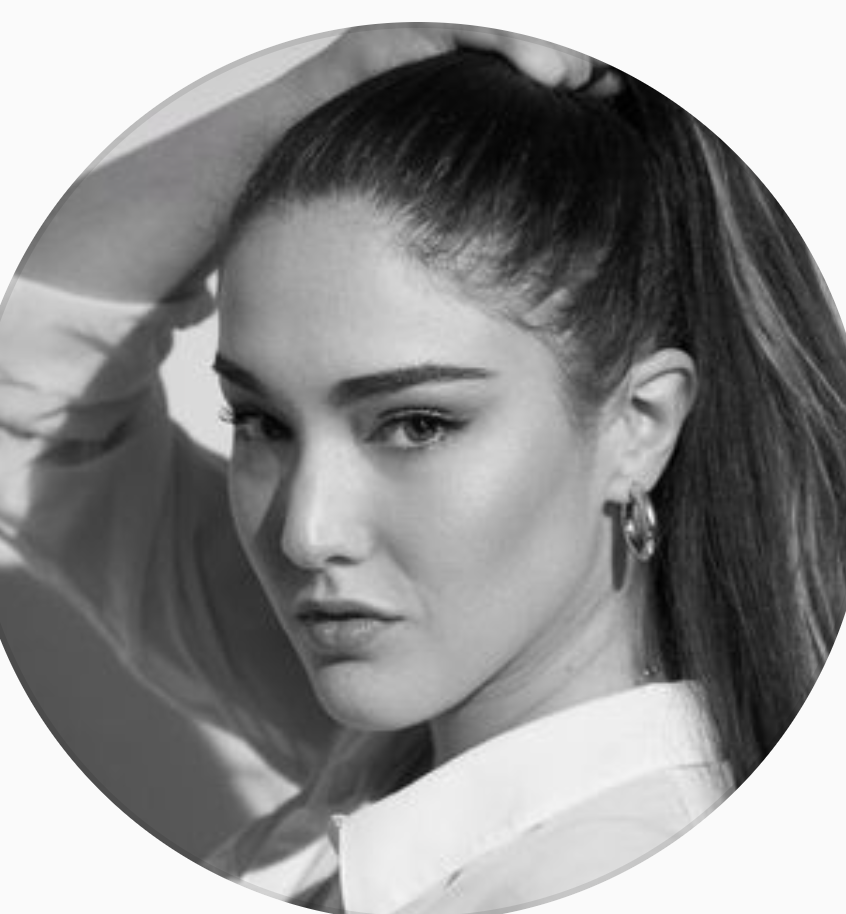
Alexandra Arriaga is a chemist, Public Health practitioner, medical researcher, and haircare influencer. Besides working as a scientist, she currently uses her knowledge and background to bust myths related to products and beauty practices on social media. She’s an advocate for using science to to optimize your beauty routine.
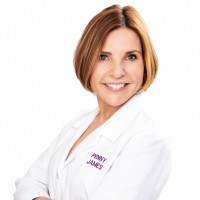
A board-certified Trichologist, Penny James works with anyone who is suffering from hair loss and scalp problems. She has over 20 years of work experience in the industry and has collaborated with celebrities such as Lady Gaga, Sarah Jessica Parker, Megan Hilty, Sting, Trudy Styler, and Lorraine Bracco. She began her career in London working for Trevor Sorbie, then moved to New York and became a founding stylist for Frédéric Fekkai.
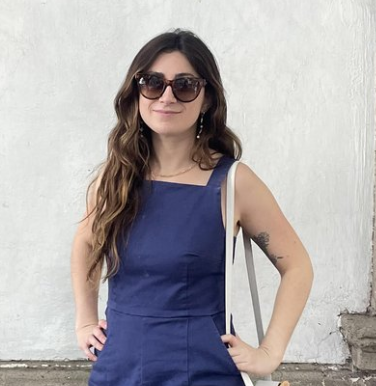
Alex Efstratiou is a hair stylist and colorist in New York City. Hailing from the Hudson Valley, after graduating from hair school she quickly found herself in SoHo, immersed in an intensive apprenticeship at Arrojo. After many years of traveling the country as a sought-out haircutting educator, she decided to shift her focus and incorporate hair coloring into her salon repertoire. With over 14 years in the industry, she is known for her dynamic haircutting skills and sun-kissed hair colors.
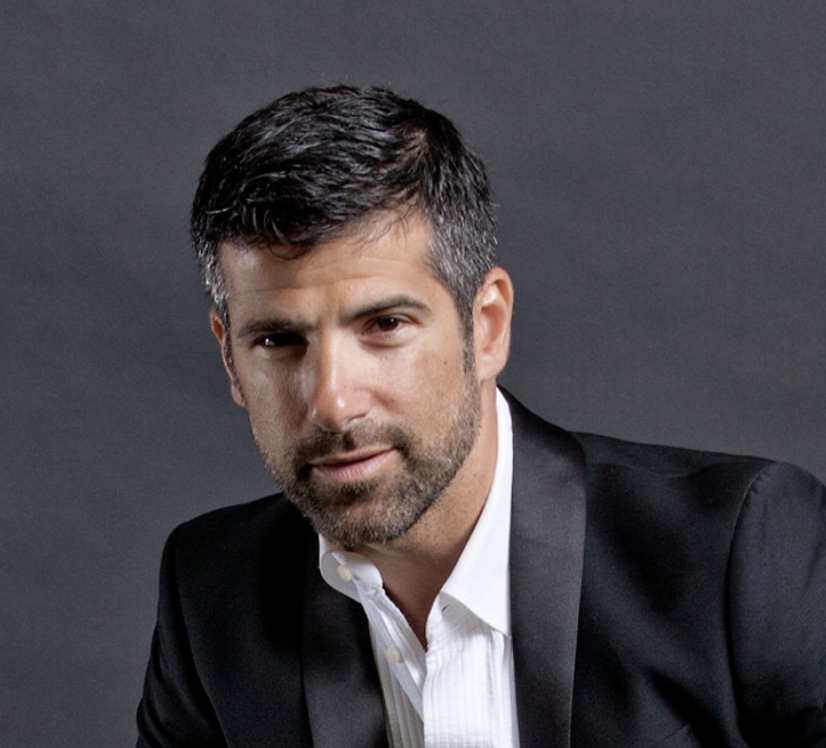
After a very successful career in Tel Aviv, Israel, as the top hair stylist with an A-list clientele including celebrities, models, and singers, Alon decided to make his move to the City of Angels and take his artistry to the next level. Immediately, he drew a high end clientele and connected with the best agencies in town including Ford, LA Models, and Wilhelmina, as well as CAA and William Morris Endeavor. Throughout his eleven year span in Los Angeles, Alon has collaborated with the industry's leading celebrities and models to create memorable looks and set trends in both entertainment and fashion. These names include Heidi Klum, Courtney Love, Melissa George, Ellen Barkin, and Kyle McLaughlin.
Stay In The Know
Get exclusive access to fashion and beauty trends, hot-off-the-press celebrity news, and more.

Samantha Holender is the Senior Beauty Editor at Marie Claire, where she reports on the best new launches, dives into the science behind skincare, and shares the breakdown on the latest and greatest trends in the beauty space. She's studied up on every ingredient you'll find on INCI list and is constantly in search of the world's glowiest makeup products. She's constantly tracking the biggest nail and hair trends to pop up in the beauty space, going backstage during fashion weeks, tracking celebrity looks, and constantly talking to celebrity hair stylists, nail artists, and makeup artists. Prior to joining the team, she worked as Us Weekly’s Beauty and Style Editor, where she stayed on the pulse of pop culture and broke down celebrity beauty routines, hair transformations, and red carpet looks. Her words have also appeared on Popsugar, Makeup.com, Skincare.com, Delish.com, and Philadelphia Wedding. Samantha also serves as a board member for the American Society of Magazine Editors (ASME). She first joined the organization in 2018, when she worked as an editorial intern at Food Network Magazine and Pioneer Woman Magazine. Samantha has a degree in Journalism and Mass Communications from The George Washington University’s School of Media and Public Affairs. While at GWU, she was a founding member of the school’s HerCampus chapter and served as its President for four years. When she’s not deep in the beauty closet or swatching eyeshadows, you can find her obsessing over Real Housewives and all things Bravo. Keep up with her on Instagram @samholender.
- Gabrielle UlubayBeauty Writer
- Julia MarzovillaFashion E-Commerce Editor
-
 'Bad Influence' Charts the Demise of a Popular Social Media Squad—Here's Where the Kidfluencers Are Now
'Bad Influence' Charts the Demise of a Popular Social Media Squad—Here's Where the Kidfluencers Are NowThe names in the Netflix docuseries have fallen out of touch with subject Piper Rockelle.
By Quinci LeGardye Published
-
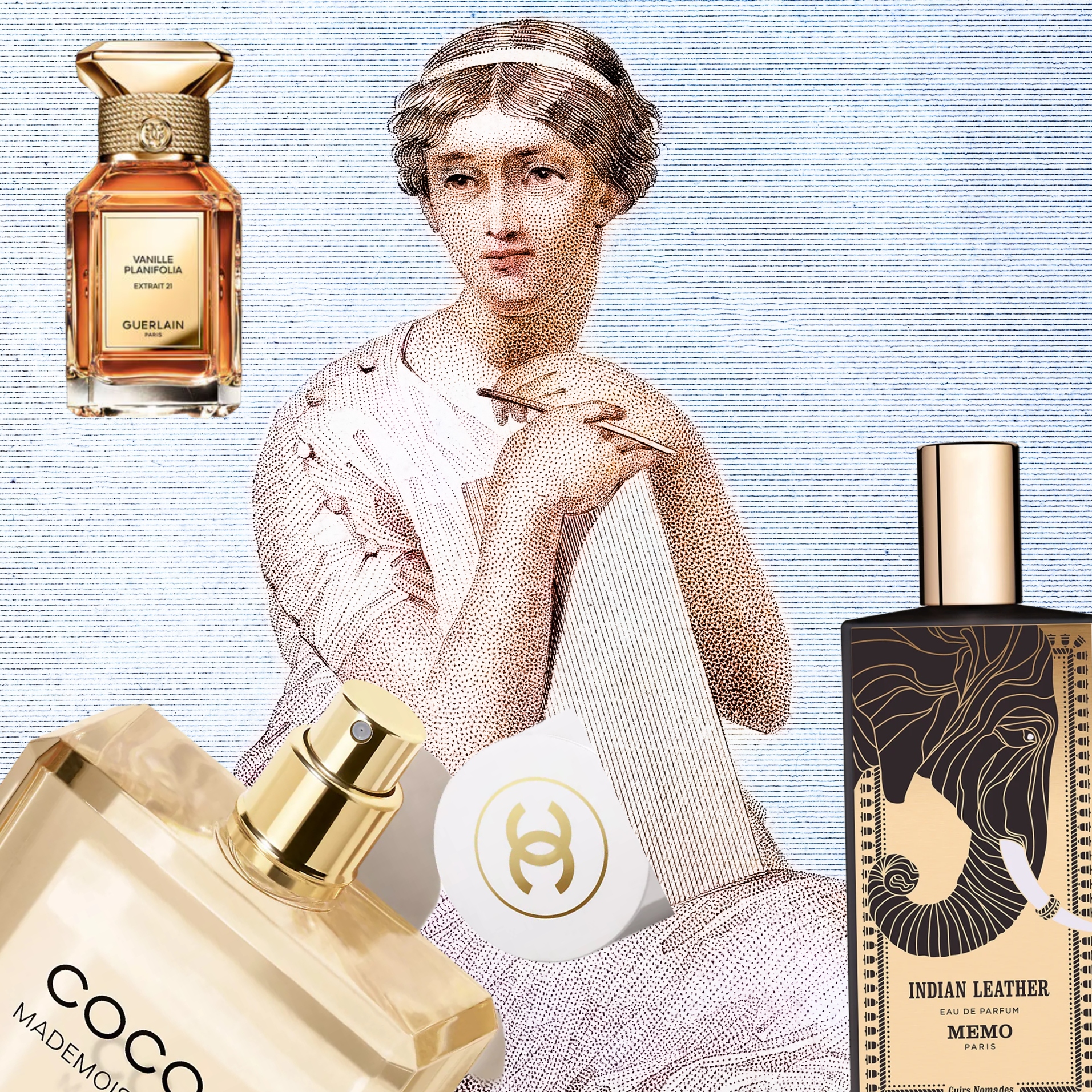 What's Your Olfactory Personality?
What's Your Olfactory Personality?Curating your scent style infuses individualism into a perfume wardrobe.
By Samantha Holender Published
-
 The Future Queen of Norway Trades Camo Fatigues For a 125-Year-Old Tiara and Her Mom's Old Evening Gown
The Future Queen of Norway Trades Camo Fatigues For a 125-Year-Old Tiara and Her Mom's Old Evening GownSomething old, something new, something borrowed, something blue.
By Kristin Contino Published